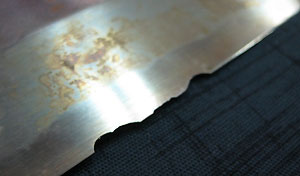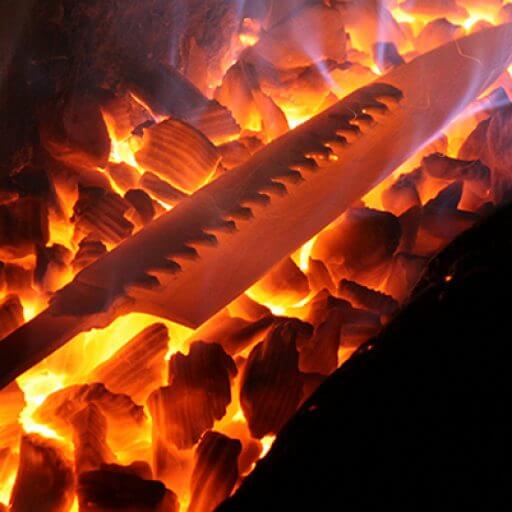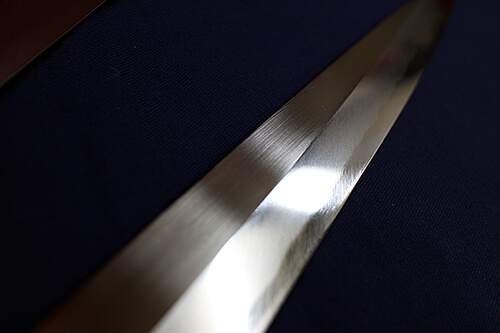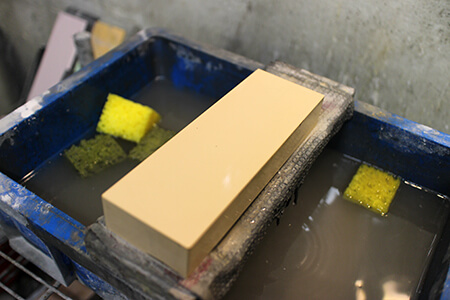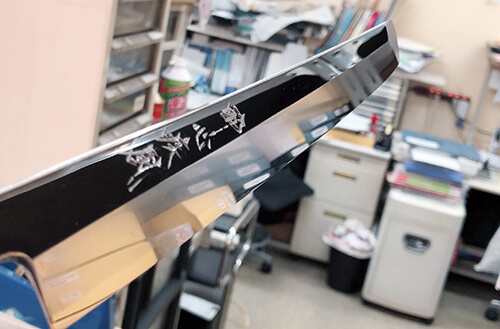combination
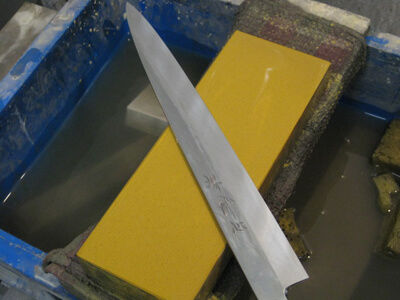
Today, I worked on adjusting the edges of various knives. While the artisans initially put a sharp edge on them, sometimes during the finishing process, the edge can get a bit damaged or there might be a slight burr left, resulting in a less than perfect ‘whoa!’ level of sharpness. I know not many people buy a knife and start using it straight from the box, but it’s a personal curiosity of mine. I aim to make new knives that can easily cut through things or catch onto your nail right out of the box.
Especially with Japanese knives, I pay a lot of attention to these details. While doing this, I also explore the compatibility of different sharpening stones and gain a better understanding of the techniques and quality of the blacksmiths.
It’s a highly personal feeling, but I use this as a benchmark for crafting products. Generally, when chefs sharpen their knives, they transition from a medium grit stone to a finishing stone. If you’re using a properly heat-treated knife, you might regain the sharpness with just a few passes on the finishing stone, minimizing the use of the medium grit stone.
Today, I sharpened many knives made of white #2 steel, focusing on refining the edge. So, I only used finer stones like finishing stones or natural stones. However, when sharpening in large quantities, occasionally I encounter blades that still feel slippery (don’t catch on the nail) even after sharpening. Until now, I had been searching for the right finishing stone for each knife, but today, I decided to lightly run a medium grit stone over the edge to ‘rough it up’ before applying what I thought was the best finishing stone for that particular steel. To my surprise, the edge transformed dramatically.
It’s simple logic that a slightly coarser edge on the tip improves grip, but I was amazed by the extent of the change. There was no rough feeling from the medium grit stone, and the smooth feeling from the finishing stone was felt at the edge, resulting in a ‘generally sharp!’ condition. While it may seem like I’ve achieved this sharpness with just the finishing stone, it feels more like I’ve connected the base, which was created with the medium grit stone, to the finishing stone. Overdoing it with the finishing stone might lead to slipping.
I suspect this pattern might be more prevalent with white #2 steel, and it might work well with Gin-san steel too! For those accustomed to using a medium grit stone followed by a finishing stone, this might seem like a surprise, but it’s an exciting discovery for me. There are many possibilities stemming from this, I imagine.
It’s all speculation, but there seem to be several conditions for achieving a sharp edge with just the finishing stone. The state of the edge, the relationship between the shape and thickness of the cutting edge, and many other factors contribute to sharpness. You might think, ‘Do you really think about this so intricately?’ But it does have a real impact on crafting our products.
hibishugyo
- 2010-03-12
